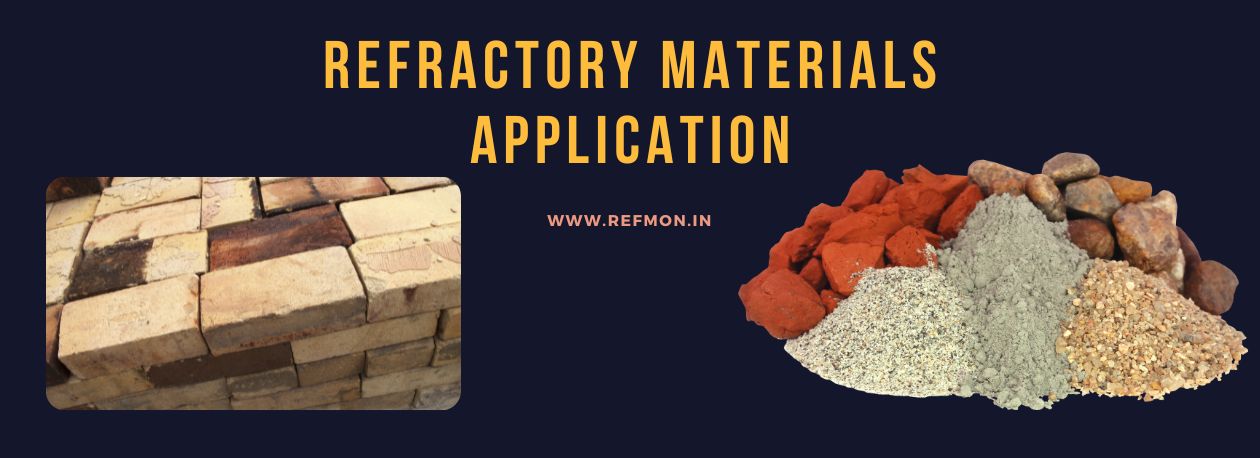
Application of Refractory Materials in Iron and Steel Industry:
Introduction- Crude steel production has historically relied heavily on refractory materials to line metallurgical vessels. They must now be viewed as an integral part of the metallurgical process, even though their purpose used to be almost entirely limited to protecting the steel casings of the vessels.
Refractory Products' Impact Across Different Steel Industries-
The sole basis for modern refractory technology is no longer the material's inherent characteristics. It has developed into a field of technology that encompasses heat engineering, monitoring methods, furnace design, liner installation, and furnace operation. The development of refractory technology and refractory material suppliers coincided with improvements in steel and iron production technologies.
Although the ability to contain substances at high temperatures is correctly identified as the fundamental property of refractories, refractories consist of a large class of materials with this property varying degrees under various time and usage conditions. Refractory compositions come in a wide variety, are manufactured in different shapes and forms, and have been adapted for multiple applications. They will all experience temperatures above 1000°F (538°C) while in use unites them.
Refractory Goods Can Be Divided Into Two Groups:
Monolithic or Specialty Refractories and Brick-Shaped Refractories!
Refractory linings are created using these bricks, specialized materials like plastics, constables, gunning or ramming mixes, or a combination of the two.
Refractory materials significantly influence the price and quality of steel products. Recent years have seen an increase in the demand for high-grade refractories due to the diversity of steel products and their purity requirements. High temperatures of around 1600 degrees centigrade are necessary for steel production. Additionally, refractories are required since steel production involves chemically reactive high-temper stages, including molten steel, slag, and hot gases. The main requirement is for high-quality refractory that is more affordable because the cost of refractories contributes to the product's price.
Refractories can create or destroy. Every operation involving high temperatures needs to have an energy-saving assurance system. Energy can be saved and financial loss avoided with the proper quantity, quality, and engineering refractories.
Uses of Refractory Materials in Steel Industry-
Refractories Consist Of...
To prevent molten metal from oxidizing and forming slag, refractory materials supplier is employed in the iron and steel industry. These refractories mainly consist of zirconia (ZrO2), alumina (Al2O3), silica (SiO2), and magnesia (MgO) (ZrO2).
Refractories Based On Silica
Due to their high melting point, low cost, superior thermal shock resistance, and simplicity of application, silica-based refractories are extensively employed in the iron and steel industries. Additionally, they exhibit high chemical stability and corrosion resistance. These refractories are ineffective in applications with high temperatures, though.
Almina-Based Refrigerators
In the iron and stainless steel industries, refractoriness based on alumina is frequently utilized. The metallurgical sector extensively uses alumina-based refractory products because of their high melting point, low thermal conductivity, and good corrosion resistance.
Magnesium-Based Refrigerants
In producing iron and carbon steel, refractoriness based on magnesia is used. Their distinguishing features are the high melting points, low thermal conductivities, and strong corrosion resistance of goods made of magnesium.
Refractors With A Zirconia Base
The iron, steel and nonferrous metals sectors application of Refractory materials made of zirconia. High mechanical strength, stability at significant temperatures, and high corrosion resistance are all characteristics of zirconia-based refractories.
Conclusion-
The refractory industry is little about other sectors. Due to its insignificance in significant user industries like steel, cement, aluminum, etc., it has yet to receive the recognition it deserves. However, because it is a very specialized sector of the economy, it cannot be disregarded.